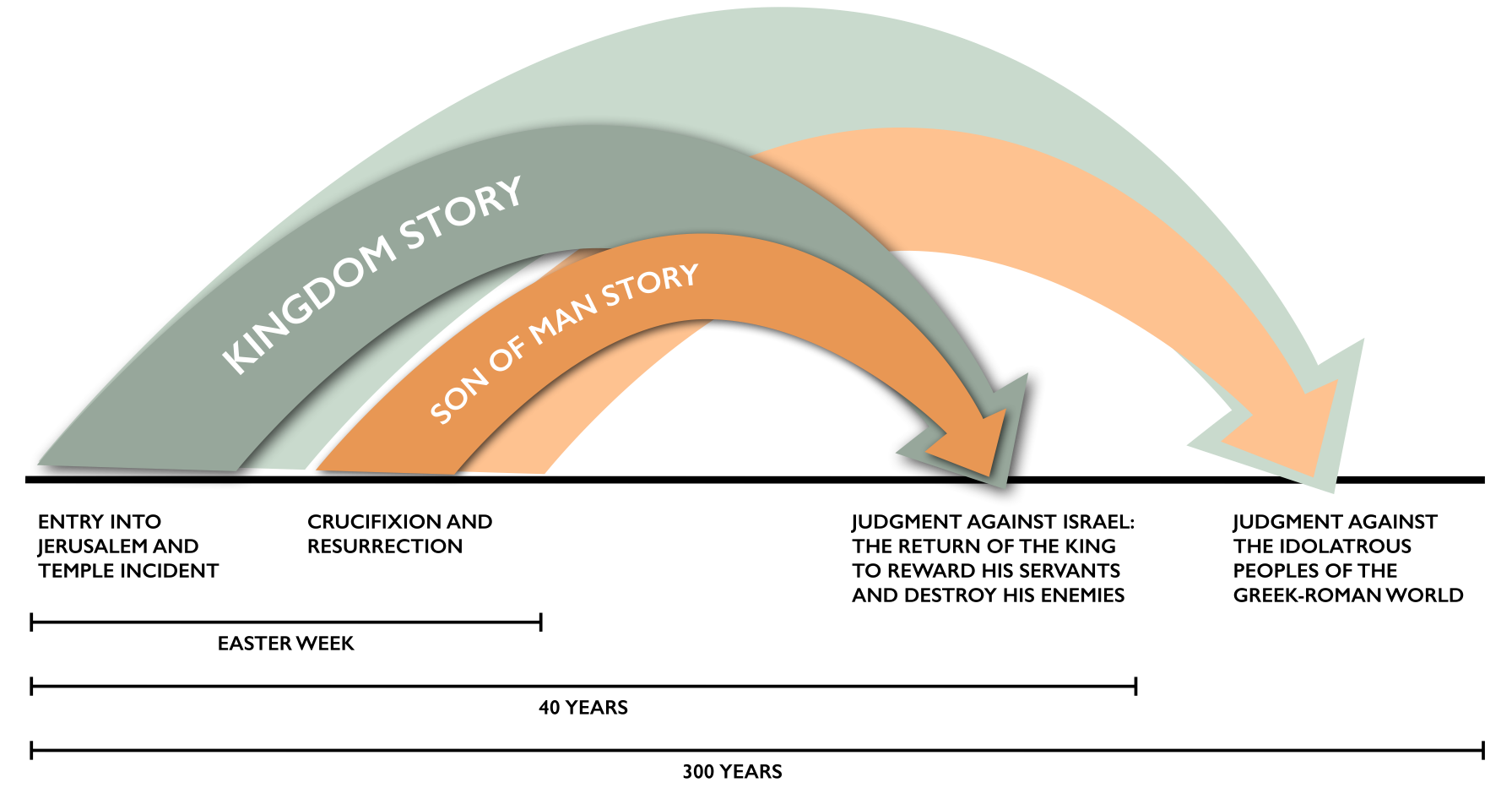This is a brief addendum to the earlier post this week about the two meanings of Easter. A bit of an exchange on Facebook suggested to me that modern theologies of Easter are a striking inversion of what we find in the New Testament. I have tried to represent this graphically.
The big public Easter story in Luke and Acts is not the death and resurrection of Jesus. It is the announcement and fulfilment of the rule of God, first with respect to Israel, then with respect to the nations opposed to Israel. “Thy kingdom come, they will be done….” The key moments in the Easter week are the entry into Jerusalem, the violent protest in the temple, and the cursing of the fig tree. The decisive future outcomes are predicted in Jesus’ “apocalyptic” discourse and in Paul’s speech to the men of Athens in the Areopagus (Acts 17:30-31).
The minor insider story is the story of the Son of Man, who is both the individual Jesus and the community of his followers. The Son of Man suffers at the hands of both the Jews and the Gentiles, he is killed, he is raised from the dead, vindicated, glorified, and eventually will be acknowledged by the nations. The conversion of the Roman Empire is, in historical terms, the supreme validation of the mission of Jesus and of his followers. The suffering and vindication of the righteous community is the means to that end.
Following the collapse of the Christendom paradigm—the rule of Christ over the nations of Europe—we don’t know what to do with the overarching kingdom or theocratic dimension to the gospel message, and the secondary story about death and resurrection has inflated to fill the vacuum. The kingdom of God has been reduced to personal hope or ethical principle—perhaps at best, some vague and unverifiable sense that God is getting his way in the world, and that all will urn out OK in the end. The thoroughly realisticprophetic and historical dimension that we see in the New Testament accounts has been removed.


Recent comments